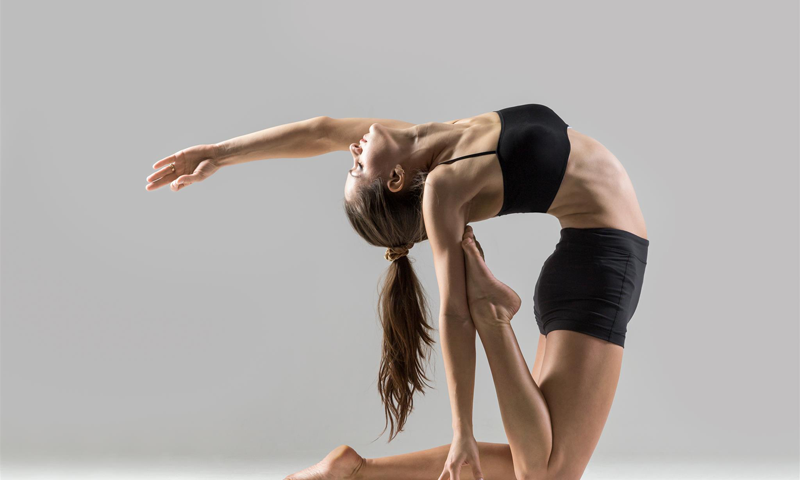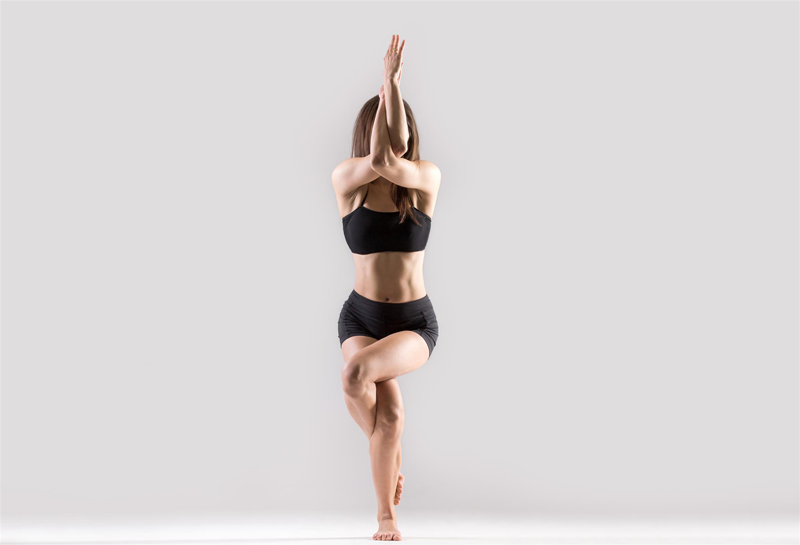
What is Ananda Yoga?
April 3, 2018
The Health Benefits of Yoga
April 17, 2018What is Bikram Yoga?

Often referred to as ‘Hot Yoga’, Bikram Yoga is a variation of the Hatha style. The style is performed in a warm studio that is typically heated to 100 degrees. When attending a Bikram class, it’s important to wear breathable yoga clothes to allow the body to oxygenate sufficiently. Bikram classes consist of 26 different asanas that are practiced with a slow, mindful approach. When practiced in the correct order, each posture is designed to prepare the body for the next. In this article, we explore Bikram Yoga in more detail.
What is Bikram Yoga?
Bikram Yoga is best described as a variety of Hot Yoga. The style is practiced in a studio heated to 100 degrees and comprises of 26 different asanas. The postures are designed to be practiced in a set order for the duration of a 90-minute session. When performed correctly, the sequence is thought to target every part of the body. Bikram is also designed to flow fresh, oxygenated blood around the body by inducing a tourniquet effect. This is created by stretching, balancing, and creating pressure in unison. Certain asanas cause the blood supply to be temporarily restricted, allowing pressure to build up in the veins and arteries; when the posture is released, fresh blood rushes through the body.
Bikram Yoga is best practiced in a studio heated to 100 degrees. Additionally, the studio should have 40% humidity to replicate the natural Indian climate. While other forms of yoga are practiced in a warm studio, few are heated to the intense temperate of 100 degrees plus. The combination of heat and humidity caused Choudhury himself to refer to Bikram studios as ‘Torture Chambers’.
Origins of Bikram Yoga
Popular for many years, Bikram yoga first came about in the 20th century. The practice was founded by Bikram Choudhury, a former student of yoga guru, Bishnu Ghosh. From a young age, Choudhry practiced yoga daily under the supervision of Ghosh. At the age of 13, he was crowned the winner of the national Indian Yoga Championship. Choudhury continued to devote his life to yoga until he obtained a serious injury to his knee after a weightlifting accident. After seeking help from some of the most respected doctors in the world, he was told that he would never walk again. At the time of the accident, Choudhury was just 17 years old. Against doctors advice, he decided to return to Bishnu Ghosh’s yoga school to seek the help of his former teacher. After six months of intense holistic therapy, Choudhry’s injury had completely healed. This event crowned Ghosh the first physical culturist to heal the body through yoga. During his recovery, Choudhry began to develop the 26 posture sequence that we now know as Bikram Yoga. Today, the sequence is patented and used in a repetitive cycle during Bikram classes.
Health Benefits of Bikram Yoga
When the style is performed correctly, the health benefits of Bikram Yoga are endless. The heated studio causes the muscles to fully relax, allowing them to stretch further without injury. This makes it easier for students to reap the full benefits of each asana. Additionally, the heat works to detoxify the body; as yogis build up a sweat, toxins are released through the pores.

Bikram Yoga Sequences for Beginners
Tree Pose
One of the easiest postures to practice, Tree Pose is part of the 26 asana sequence. To practice the posture, begin by standing tall. Next, place your left foot on your right inner thigh, holding it either above or below the knee. When you’ve found your balance, bring both hands together into a prayer position. You are in Tree Pose. Hold the posture for a few minutes, remembering to breathe deeply throughout.
Cobra Pose
Helping to promote flexibility, Cobra Pose is another favorite in Bikram classes. To practice the asana, lie down on your mat with your stomach touching the ground. Stretch your legs out behind you, keeping the tops of your feet on the floor. Next, place your hands directly under your shoulders. Slowly bring your elbows back into your body whilst pressing your thighs into the floor. When you are ready, straighten your arms and begin to lift your chest off of the ground. You are in Cobra Pose. Hold the asana for around 60 seconds before lowering your upper body back down to the ground.
Wind Relieving Pose
Wind Relieving Pose is another asana practiced in Bikram sessions. Ideal for those that suffer from bloating, the posture helps to eliminate gas from the body by stimulating nerves in the colon. To practice the asana, lie flat on your back. Next, bring your knees into your chest and slowly rock from side to side. This movement will not only help to release gas from the body but it will also work to massage the lower back. After a couple of seconds, stretch out your left leg out and rest your thigh on the mat. You are in Wind Relieving Pose. Hold the posture for 30 seconds before switching sides.
In Summary
Bikram Yoga can be practiced by yogis of all sorts – even complete beginners! If practiced correctly, the benefits of the style are endless. When attending a Bikram class, we recommend arriving at the studio 30 minutes before the session starts. This will allow your body time to adjust to the extreme temperature before exerting yourself. It’s also important to go equipped with a lightweight yoga top and a fresh bottle of water to sip throughout the class. The lightweight clothing will allow the body to oxygenate sufficiently and the water will ensure you stay hydrated.

